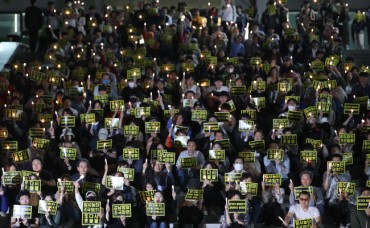
A country is defined as an aged society when more than 14 percent of its people are 65 or older. (image: Korea Bizwire)
SEJONG, Jun. 27 (Korea Bizwire) – The number of South Koreans aged 65 years or older could surpass 10 million in 2025 and jump to 18.79 million, or 38.4 percent of the country’s population, in 2047, a statistics agency said Thursday.
Statistics Korea’s latest projection represented a dramatic hike from the 7.07 million people aged 65 or older in 2017, or 13.8 percent of the country’s 51 million population.
A country is defined as an aged society when more than 14 percent of its people are 65 or older.
The statistics agency said the number of South Koreans aged 85 years or older could also rise to 3.66 million, or 7.5 percent of the population, in 2047 from 600,000, pr 1.2 percent of population, in 2017.
The demographic outlook is the latest warning for Asia’s fourth-largest economy plagued by the chronically low birthrate for more than a decade.
The decline in childbirths comes as some young South Koreans are opting to distance themselves from life’s three major milestones — dating, marriage and having children — because they cannot find decent jobs amid a prolonged economic slowdown.
Other factors are the high cost of private education for kids and skyrocketing home prices, as well as the difficulties women face in finding jobs after spending extended time away from work to raise children.
In 2018, South Korea’s total fertility rate — the average number of children a woman bears in her lifetime — hit a record low of 0.98, much lower than the replacement level of 2.1 that would keep South Korea’s population stable at 51 million.
The statistics agency said those aged less than 15 could fall to 4.5 million or 9.2 percent of the population in 2047, sharply down from 6.72 million people or 13.1 percent of the population in 2017.
The development means the country’s working-age population — those aged between 15 and 65 — could fall to 25.62 million, or 52.4 percent of the population, in 2047 from 37.57 million, or 73.2 percent, in 2017.
The increased ratio of older people could place a heavy financial burden on young people.
In 2017, every 100 working-age people supported 36.7 people — among them 17.9 are aged less than 15 and 18.8 are aged over 65.
The statistics agency, however, said in 2047 every 100 working-age people are likely to support 90.9 people — among them 17.6 are aged less than 15 and 73.3 are aged over 65.
Last year, Moody’s Investors Service said that in the coming decades, South Korea’s potential economic growth will gradually decline toward 2 percent annual growth, as the decline in the working-age population diminishes the contribution of labor to growth.
(Yonhap)






